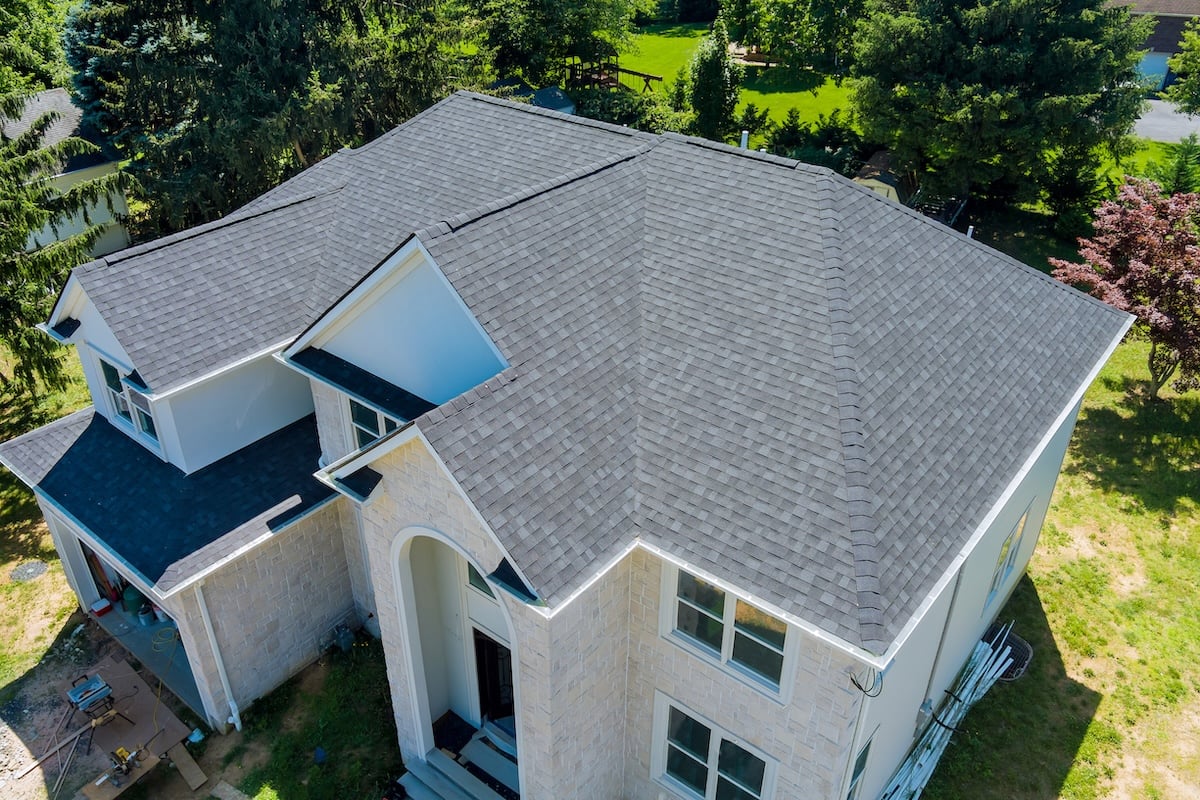
How To Measure A Roof For Shingles? (7 Steps Guide)
8/22/25
5 Min Read
Knowing how to measure a roof for shingles is an important skill for homeowners planning a roof replacement. Accurate measurements help determine how much material you need, prevent wasted money on excess supplies, and ensure the project runs smoothly. Even if you’re hiring a contractor, understanding the basics can give you peace of mind that the estimate you receive is fair and accurate.
- Accurate estimates: Measuring correctly ensures you order the right amount of shingles.
- Cost savings: Avoid overspending on materials or multiple trips to the store.
- Project planning: Proper measurements help you plan for waste and extra coverage.
Let’s walk through the step-by-step process to measure your roof like a pro.
Why Measuring Matters
Roofing materials are typically sold by the “square,” which equals 100 square feet of coverage. If your measurements are off, you could end up short on shingles or overspending on unnecessary supplies. For homeowners tackling DIY projects, knowing how to measure ensures you’re fully prepared before installation begins, whether it is a shingle roof repair or full replacement that you are planning. For those hiring contractors, it helps you understand how your roof’s size influences costs.
Accurate measurement also prevents unnecessary delays. Ordering too few shingles can stall the project and expose your home to the elements longer than necessary. On the other hand, ordering too many wastes money and leaves you with leftover materials that take up space and may not be returnable. By starting with the right numbers, you avoid both problems.

7 Steps To Measure A Roof For Shingles
Here’s a simple step-by-step guide to getting accurate roof measurements.
- Gather tools: You’ll need a tape measure, ladder, notepad, pen, calculator, and ideally a helper for safety.
- Measure the base of your home: Start by measuring the length and width of the ground footprint of your house. For example, a 40-foot by 30-foot house equals 1,200 square feet of base area.
- Account for overhangs: Extend measurements to include roof overhangs, typically 6–12 inches beyond the walls. This ensures full shingle coverage.
- Factor in roof pitch: Roof slope affects surface area. A simple way to estimate is using a roof pitch multiplier (for example, a 6/12 pitch increases surface area by about 1.12 times). Multiply your base measurement by this factor to get a more accurate estimate.
- Measure each roof section: If your roof has multiple sections (like dormers, additions, or gables), measure each separately. Write down the length, width, and pitch for accuracy.
- Add it all together: Add the square footage of each roof section to calculate total area. Divide by 100 to determine how many “squares” of shingles are required.
- Include waste factor: Add 10–15% extra to your total to account for waste from cutting and fitting shingles, especially if your roof has valleys or complex angles.
Example Calculation
Let’s say your home measures 40 feet by 30 feet with a 6/12 pitch.
- Base footprint: 40 x 30 = 1,200 sq. ft.
- Pitch multiplier: 1,200 x 1.12 = 1,344 sq. ft.
- Waste factor (10%): 1,344 x 1.10 = 1,478 sq. ft.
- Total shingles needed: About 15 “squares” of shingles.
This calculation ensures you have the right amount of material without overspending.

Tips For Homeowners Measuring Their Roof
Measuring your roof can seem intimidating, but with careful planning, it’s manageable.
- Safety first: Never climb on the roof without proper equipment. Consider measuring from the ground when possible.
- Use online tools: Satellite measurement tools can give you a ballpark figure if climbing isn’t an option.
- Double-check numbers: Measuring twice ensures you don’t order too few or too many shingles.
- Consult a contractor: Even if you measure yourself, getting a professional roofer estimate provides peace of mind.
Common Mistakes To Avoid
Many homeowners run into the same challenges when measuring a roof for shingles.
- Forgetting roof pitch: Ignoring slope leads to underestimating the amount of shingles needed.
- Skipping waste factor: Not accounting for extra materials can leave you short mid-project.
- Ignoring small sections: Overlooking dormers, porches, or garages means inaccurate totals.
- Unsafe practices: Climbing a roof without proper safety gear can lead to injury.
Best Tools for Measuring Your Roof
Having the right roofing tools makes the process faster, safer, and more accurate. Homeowners don’t need professional equipment, but investing in a few basics will help.
- Tape measure or laser measure: A long tape measure works well for ground-level measurements, while a laser measure can provide faster, more precise readings.
- Roof pitch gauge: Available at most hardware stores, this tool helps you calculate slope without guesswork.
- Calculator or spreadsheet: Organizing your numbers digitally prevents mistakes and makes it easier to adjust for waste.
- Satellite apps: Free and paid online tools allow you to estimate your roof’s size using aerial imagery, which can be a helpful supplement to manual measurements.
Using these tools gives you confidence that your numbers are correct and ensures your project runs smoothly.

Measuring Made Simple
Learning how to measure a roof for shingles gives homeowners confidence when planning a replacement project. By gathering the right tools, accounting for pitch, and including a waste factor, you’ll have an accurate estimate of the materials required. Whether you’re handling the project yourself or hiring a reliable contractor, understanding your roof’s size helps you budget effectively and avoid surprises.
At Buckeye State Roofing, we take the guesswork out of roof measurements. Our experienced team uses professional tools and methods to ensure precise calculations and accurate material estimates. If you’re planning a shingle replacement, contact us today for a free estimate and expert guidance tailored to your home.
